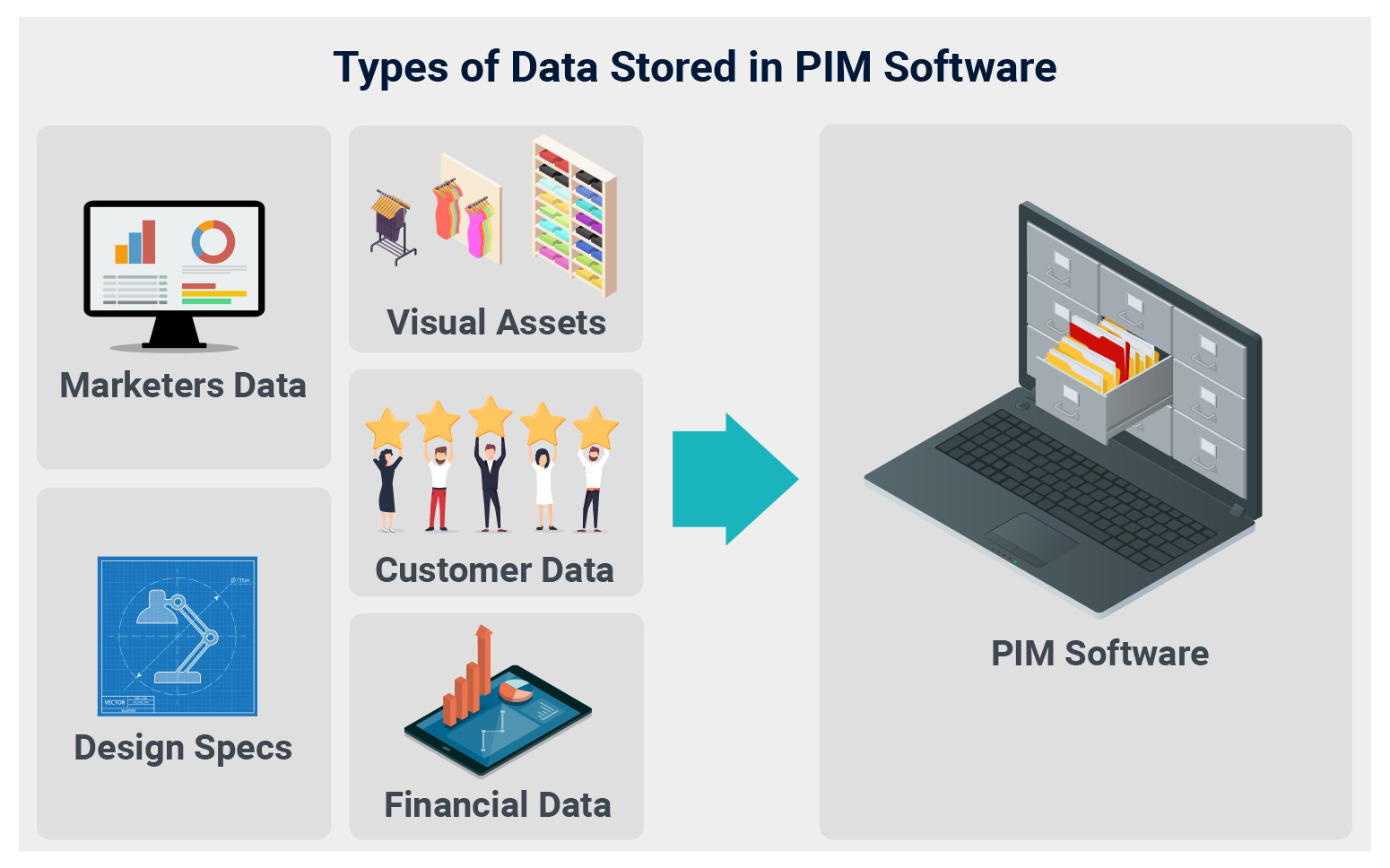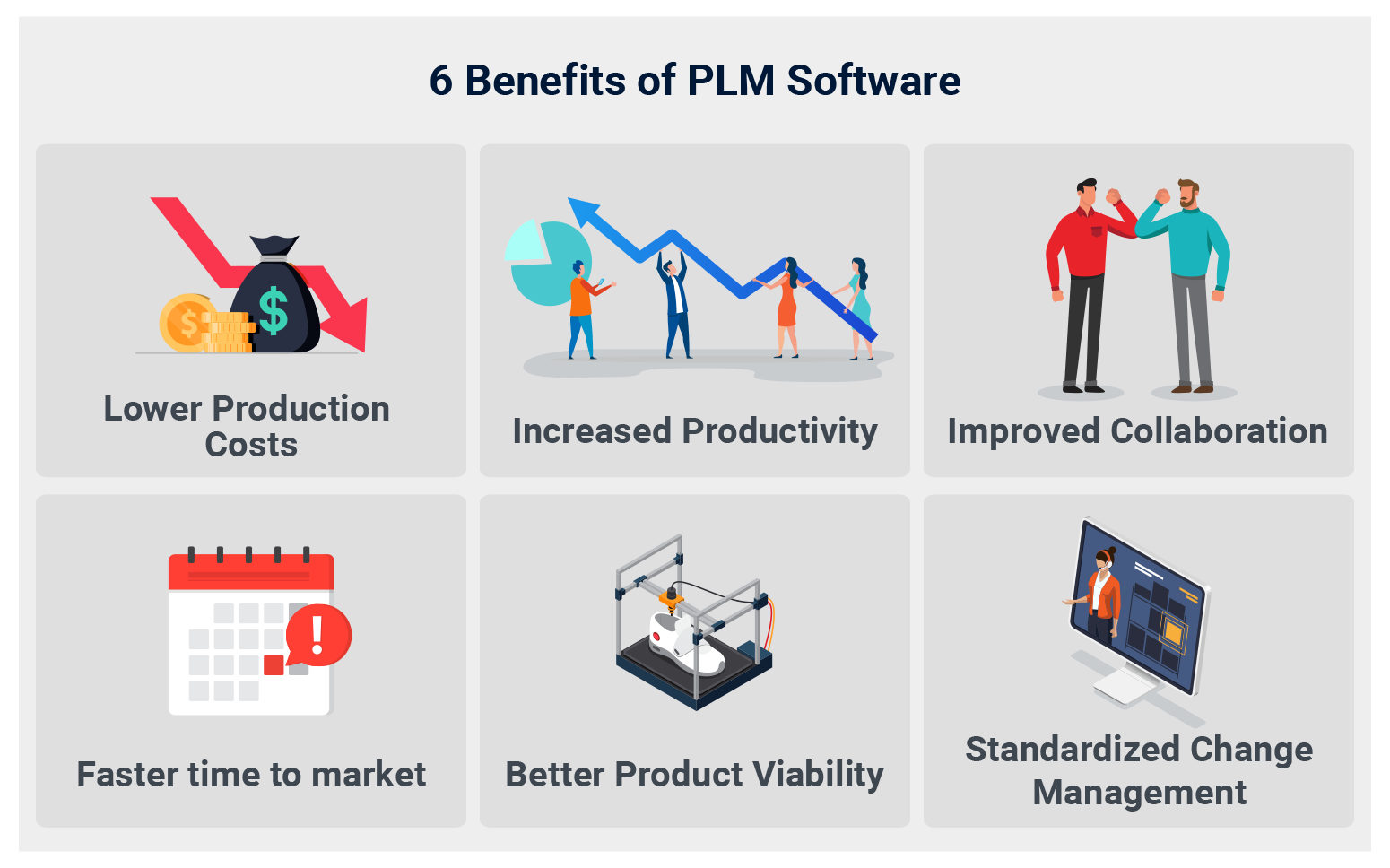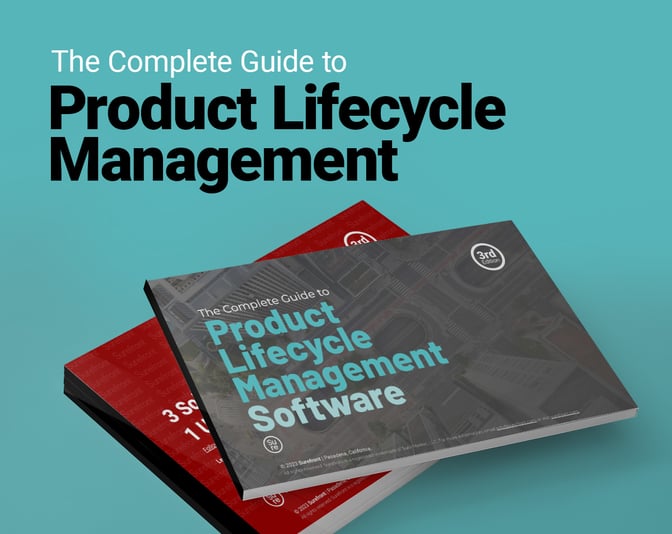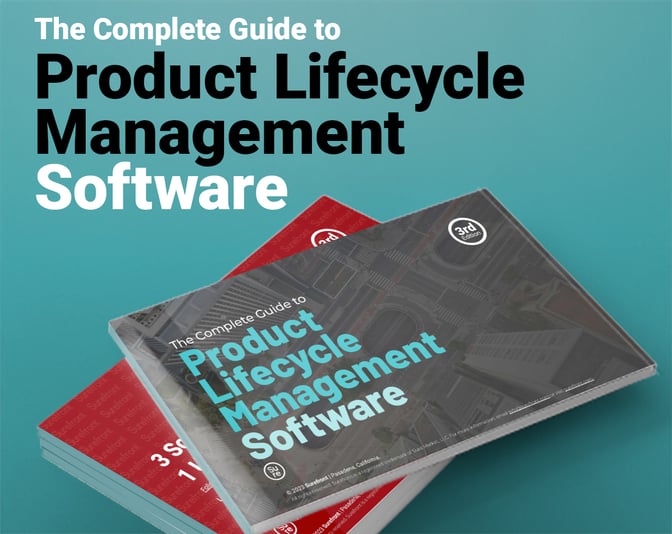Share this
PLM vs PIM: Which Do You Need?
by Surefront on May 31, 2024 2:00:00 PM
Home > Blog > PLM vs PIM: Which Do You Need?
Table of Contents
- What is Product Lifecycle Management (PLM) Software?
- What is Product Information Management (PIM) Software?
- The Benefits of PLM Software
- The Main Reason to Use PIM Software
- PLM vs PIM - Final Insights and Recommendations
Product Lifecycle Management (PLM) and Product Information Management (PIM) tools are critical to the daily business tasks of B2B retailers.
Whether designing new products or managing product information, choosing the right software is pivotal for success. Grasping the key functional differences between PLM and PIM software is the first step toward optimizing your processes.
Rather than focusing on which one is “better” or prescribing which software type you need, this article will focus on comparing and contrasting PLM and PIM features. We’ll see where their values intersect (if at all), and clearly define who may benefit from each type of software.
Based on these insights, we can recommend what might fit your needs.
What is Product Lifecycle Management (PLM) Software?
|
Key Features of PLM:
|
|
Product Lifecycle Management (PLM) is a process by which an organization brings products to life. This considers everything from concepting to product development. PLM software serves as a centralized platform for development teams to collaborate with accurate historical data that exists for a product’s entire lifecycle.
Over a series of cycles, product development teams leverage data entered into their PLM system to improve product quality.
It’s important to note that PLM systems don’t facilitate the actual design of a product. Design takes place in Adobe or other programs that are intended for creating visuals. However, once digital sketches and technical drawings are completed, teammates can leverage those design documents to collaborate on improvements or the next stages of development using a PLM system.
PLM streamlines collaboration across the product lifecycle
Without Product Lifecycle Management software, teams are left collaborating on design files via email or using generic communication software. These tools lack context and organization, leaving teams at risk of losing data or communications in long chains of emails or generic chats. PLM solves this by unifying product data from the earliest stages of a product's conception to the final product’s distribution.
Over each stage in the product lifecycle process, development teams use historical data to find ways to source better materials and make design tweaks that can cut down production costs and improve time to market. Using a PLM system to establish a design iteration process that leverages a feedback loop of key stakeholders is the best way for an organization to strike the perfect balance of time, cost, and quality.
PLM stores product data in a central location
Beyond visual data like designs and tech packs, a Product Lifecycle Management system stores an array of data relevant to a product’s journey from concept to market. Here’s a quick reference list for the types of data stored in a PLM platform:
- Design
- Product Development
- Sourcing
- Production
- Sales
As Product Lifecycle Management starts right from a product’s conception, PLM software is naturally the origin point for a product’s overall data. Once that product is fully developed, the data is stored in an enterprise resource planning (ERP) system. From there, if a company plans to sell via e-commerce sales channels, a PIM solution is the next step for distributing accurate data to those channels.

What is Product Information Management (PIM) Software?
|
|
PIM Benefits:
|
Product Information Management (PIM) software, also sometimes called Product Content Management (PCM) software, serves as a centralized repository for all product distribution. PIM software is designed to help businesses distribute correctly formatted product info to their e-commerce retail channels. With the e-commerce boom over the last two decades, brands need more solutions to standardize their most current and accurate product information.
Having PIM software to store, organize, and disseminate accurate product data eliminates inconsistent information. This facilitates the distribution of better product information to sales channels and more accurate internal data for cross-team transparency. In turn, companies that use PIM software experience improved efficiency across their entire value chain—including both internal teams and external stakeholders.
How PIM, DAM, and ERP systems work together
Product information management software works in tandem with other enterprise resources to assimilate all key product data. For example, it may receive product data specifications and other core information from an enterprise resource planning (ERP) system. It may also receive visual assets like photography, videos, and digital images from a digital asset management (DAM) system.
PIM software also allows marketing teams to upload enriched product copy, optimized for their relevant keywords and audiences before distribution to their e-commerce partners. This combines to create a comprehensive database for each product with the most relevant and recent product information.
Product Information Management software stores a wide variety of data that helps different portions of an organization in different ways. Here’s a list of the most important types of data stored in a PIM:
- Marketing Data
- Visual Assets
- Customer Data
- Design Specifications
- Financial Data

For a more exhaustive list of the data stored in a PIM, check out our Product Information Management Guide blog.
The Benefits of PLM Software
We need to clearly define the benefits of product lifecycle management software to justify why it’s worth centralizing data in this manner. Let’s start with the problem PLM systems solve: there are next to no collaboration tools that create an immersive environment for teams to collaborate on the same product
Think of Slack or other chat tools. These tools are great for engaging internal team members for ad hoc communications. However, they lack the depth and specificity needed for product development or sharing notes about designs. Those critical pieces of information quickly become buried as time passes.
The issues only get worse when development teams lean on email attachments. Information is easily lost in translation.
How PLM solves product collaboration problems
This is where Unified Product Lifecycle Management tools enter the picture. PLM tools drive growth by optimizing each stage of a product's lifecycle. They do this by addressing issues with data silos and lack of contextual collaboration. The product lifecycle stages include the 4 main phases of PLM:
- Concept
- Design
- Production
- Distribution
Each stage requires context, clarity, and clearly defined workflows for everyone involved to facilitate a healthy PLM process. Surefront’s unified PLM and PIM platform is a great example of a fully immersive environment that allows teams to collaborate on design and development initiatives with visuals and data in a single place.
Taking context up a notch, Surefront’s patented built-in chat communications are tied to each page on which they occur. For example, if you created a tech pack on Surefront and need notes from your teammates, you can see a historical log of all communications on that page within the platform. This inherently eliminates data silos as all relevant data and communications for the product at hand are stored in a single, easy-to-access place.

Surefront Unifies PLM and PIM functionalities
As a unified PLM, PIM, and CRM solution, Surefront goes several steps beyond traditional Product Lifecycle Management software. Most PLMs only facilitate internal product collaboration. Surefront, on the other hand, enables both internal and external collaboration. At any stage of the product lifecycle journey, you can invite your external partners to view showcases of your products.
Where other software may help with the “one to many” showcasing of a product, Surefront facilitates the “many to many” showcasing of all your products. You can send tailored showcases with robust visuals of multiple products to several of your buyers and invite them in to negotiate sales or further product customizations—bringing you closer to finalizing purchase orders.
Surefront combines all product data and stakeholders on a unified product collaboration platform. This makes it a fantastic tool for fostering and managing supplier relations.
Surefront also helps you bring products to market faster and more efficiently while simultaneously giving you tools to drive down costs while driving up product quality over a series of product lifecycles. These are key ROI results that you should look for with any tool that includes PLM functionality.
The Main Reason to Use PIM Software
Back on the Product Information Management (PIM) side of the fence, let’s talk about why some companies are migrating toward this type of software.
Brands that sell their products through e-commerce sales channels use modern PIM systems for their product syndication and distribution capabilities. Product syndication refers to the process by which a brand broadcasts products with enriched product information to e-commerce sales channels.
Product syndication with Surefront
PIM software stores the latest and most detailed product information, making it the best central hub for product syndication. Surefront now offers product syndication, so you can list products customized to the specifications of hundreds of different online marketplaces in a single click.
This process is also known as Product Content Management (PCM). PCM solutions within a PIM platform ensure that your channel-specific content needs are met with predefined formatting so that each data point is uniform and accurate to each sales channel’s standards.
For example, this guarantees that if you’re listing a new furniture item to Walmart, Wayfair, and Home Depot’s e-commerce sites, your information will be automatically formatted to each of those retailers' specific requirements. This helps brands cut the time required for manually formatting and uploading every product on every sales channel.

The days and weeks it took previously to format and upload thousands of lines of product specifications and data to e-commerce channels are now done instantly with automatic syndication tools. This is a critical part of the merchandising management flow for both e-commerce brands and retailers.
With few exceptions, nearly every modern Product Information Management software provider offers automatic product formatting and syndication. As eCommerce sales become more prevalent in the retail industry with each passing year, the need for faster, more agile syndication tools will only grow.

PLM vs PIM - Final Insights and Recommendations
After looking closely at both Product Lifecycle Management (PLM) software and Product Information Management (PIM) software, it’s clear that both solutions are vital for companies’ success in omnichannel commerce. The choice is not PIM or PLM but whether you should adopt one or both solutions.
If you are a brand that does substantial business selling through e-commerce retail platforms, then a PIM solution that provides Product Content Management (PCM) is a must-have. Ask yourself these questions:
- What percentage of my sales are via e-commerce?
If it’s a lot, that’s a point in favor of PIM. - Will that share of business grow in the coming years?
If the answer is yes, you may need a PIM system. - How much time do we spend uploading products to e-commerce channels?
If it’s a significant portion of your team’s weekly work, a PIM solution will help reallocate your team’s time for other growth initiatives
We recommend adopting a unified PIM solution that meets your syndication needs as you look to scale your e-commerce business.
If you’re a brand that develops products and engages with internal and external stakeholders for those development initiatives, a PLM software solution will most certainly meet your needs. Ask yourself these questions:
- How is my development team collaborating on products?
If your team relies on emails and Slack for collaboration, your process might be inefficient and could benefit from the streamlining capabilities of PLM software. - How do we engage buyers for product customization?
If you're using email with attachments for product customization, consider switching to a more functional and collaborative system to reduce errors and improve efficiency. - How can I increase productivity in my development pipeline?
If you're out of ideas for boosting productivity, PLM software can help by reducing costs, accelerating time to market, and enhancing product quality.
Combining PIM and PLM: The Surefront advantage
It's rare that a company only requires PIM or PLM functionality as a standalone. Usually, products are developed in a PIM system and stored in a product catalog or PIM system. Your PLM is your collaboration platform. Your PIM is for syndicating completed products for e-commerce platforms and other product information users.
With Surefront, these features are already synced together. The other option is to get separate PLM and PIM systems and attempt to integrate them. We’re biased in recommending Surefront’s complete solution, but we built it that way to keep things simple and consistent.
Let’s take a look at the advantages of using Surefront:
|
Benefit |
Separate PIM and PLM |
|
|
Unified Platform |
Combines PIM, PLM, and CRM functionalities |
Separate PIM and PLM systems requiring integration |
|
Collaboration |
Facilitates both internal and external collaboration |
Typically limited to internal collaboration only |
|
Data Consistency |
Centralized data eliminates silos and ensures consistency |
Potential data silos and inconsistency between disparate PLM and PIM systems |
|
Contextual Communication |
Built-in chat tied to specific pages/projects |
Generic communication tools lacking context |
|
Supplier Relations |
Enhances supplier relations with integrated showcases |
Limited tools for external stakeholder engagement |
|
Cost Reduction |
Drives down costs with integrated development processes |
Higher costs due to multiple systems and integration efforts |
|
Product Quality |
Continuous improvement through a centralized feedback loop |
Limited feedback integration across separate systems |
|
Scalability |
Easy to scale with a unified platform |
Scaling may be complex with separate PIM and PLM systems |
|
Implementation |
Simplified implementation with a single platform |
More complex implementation with multiple systems |
You don’t want your data to be siloed. Your company’s CRM, PIM, and PLM solutions shouldn’t operate in a vacuum. Surefront is a Unified Product Collaboration Platform that powers growth and ROI. Our patented PIM, CRM, and PLM solutions streamline the omnichannel sales, merchandising, and product development processes. Surefront creates a single source of truth throughout your product lifecycle, sales, and listing processes.
The results? Up to 150% more revenue per employee and a 40% shorter product development cycle is just the beginning. Try our 10x ROI calculator to see your company’s potential profits. Or, skip the noise and book a custom demo with one of our Unified Product Collaboration Management experts today. The retail industry evolves quickly and has a lot of moving parts. We do all of the research, so you don’t have to. Stay ahead of market fluctuations, trends, and new features by subscribing to our Unified Product Collaboration Management Blog.
Share this
- PLM Software (36)
- PIM Software (29)
- Apparel & Fashion (20)
- Trending Topics (20)
- Merchandising (16)
- CRM Software (13)
- PLM Implementation (11)
- Catalog Management (6)
- Tech Packs (6)
- PLM RFP (5)
- Success Stories (5)
- Sustainability (5)
- Data Import (4)
- Line Sheet (4)
- Luxury Goods & Jewelry (4)
- Product Development (4)
- Retail (4)
- Supply Chain (4)
- Category Management (3)
- Home Furnishings (3)
- Wholesale (3)
- Consumer Packaged Goods (CPG) (2)
- Cosmetics (2)
- Data Export (2)
- Health & Beauty (2)
- RFQ & Quote Management (2)
- Consumer Electronics (1)
- Import & Export (1)
- Industry Events (1)
- Inventory Management (1)
- Pet Stores (1)
- Purchase Orders (1)
- Report Builder (1)
- Textiles & Raw Materials (1)
- Unified Solution (1)
- Vendor Management (1)
- Visual First (1)
- White Paper or Case Study (1)
- workflow (1)
- October 2025 (3)
- September 2025 (3)
- August 2025 (4)
- April 2025 (4)
- March 2025 (3)
- January 2025 (8)
- December 2024 (5)
- November 2024 (3)
- October 2024 (5)
- September 2024 (6)
- August 2024 (2)
- July 2024 (1)
- June 2024 (3)
- May 2024 (4)
- April 2024 (5)
- March 2024 (3)
- February 2024 (2)
- December 2023 (4)
- September 2023 (2)
- August 2023 (5)
- July 2023 (3)
- June 2023 (2)
- May 2023 (2)
- April 2023 (4)
- March 2023 (5)
- February 2023 (3)
- January 2023 (5)
- December 2022 (4)
- November 2022 (3)
- October 2022 (4)
- September 2022 (5)
- August 2022 (4)
- July 2022 (2)
- May 2022 (1)
- February 2022 (1)
- January 2022 (1)
- September 2021 (1)
- May 2021 (1)
- April 2021 (1)
- February 2021 (1)
- May 2020 (1)

